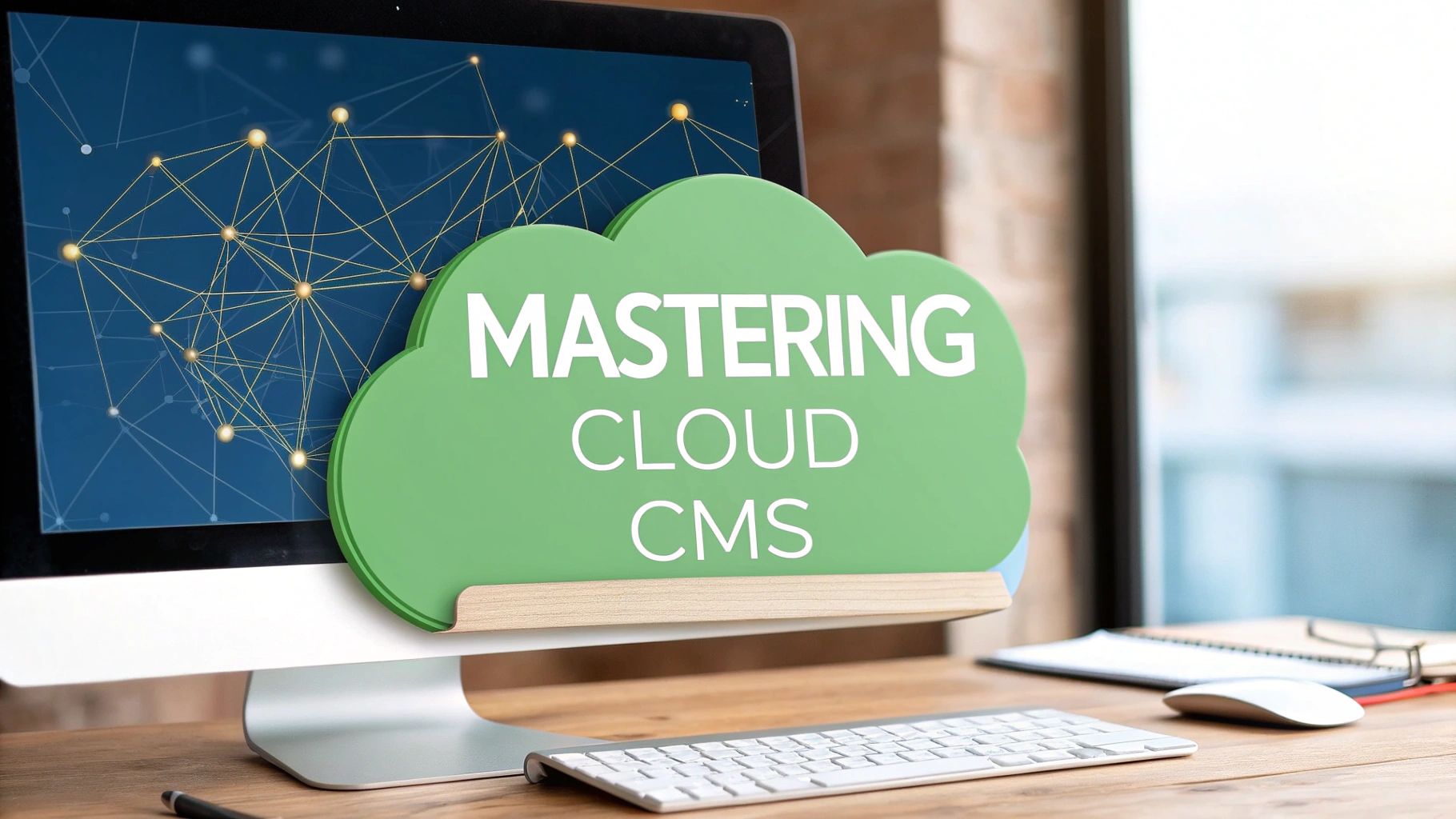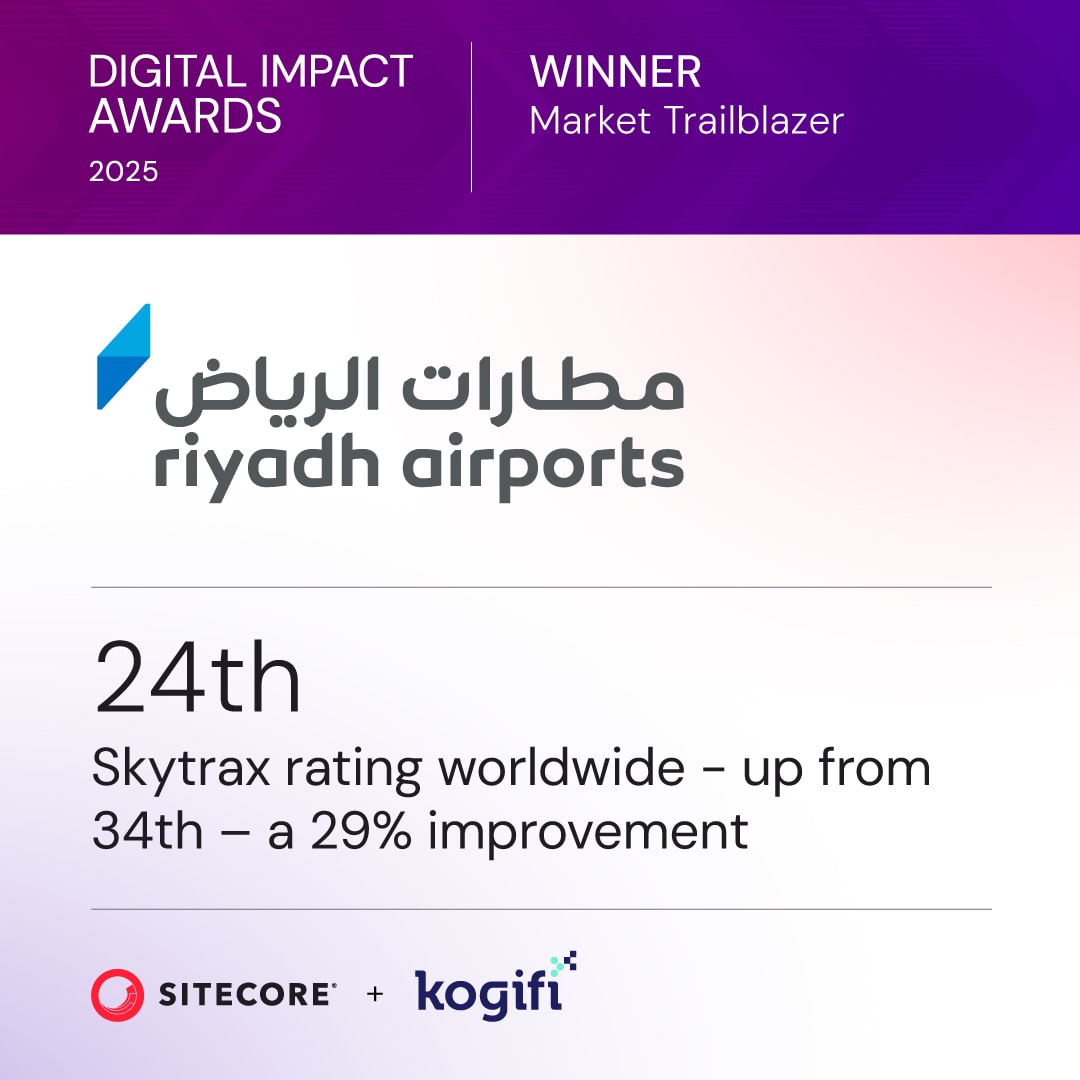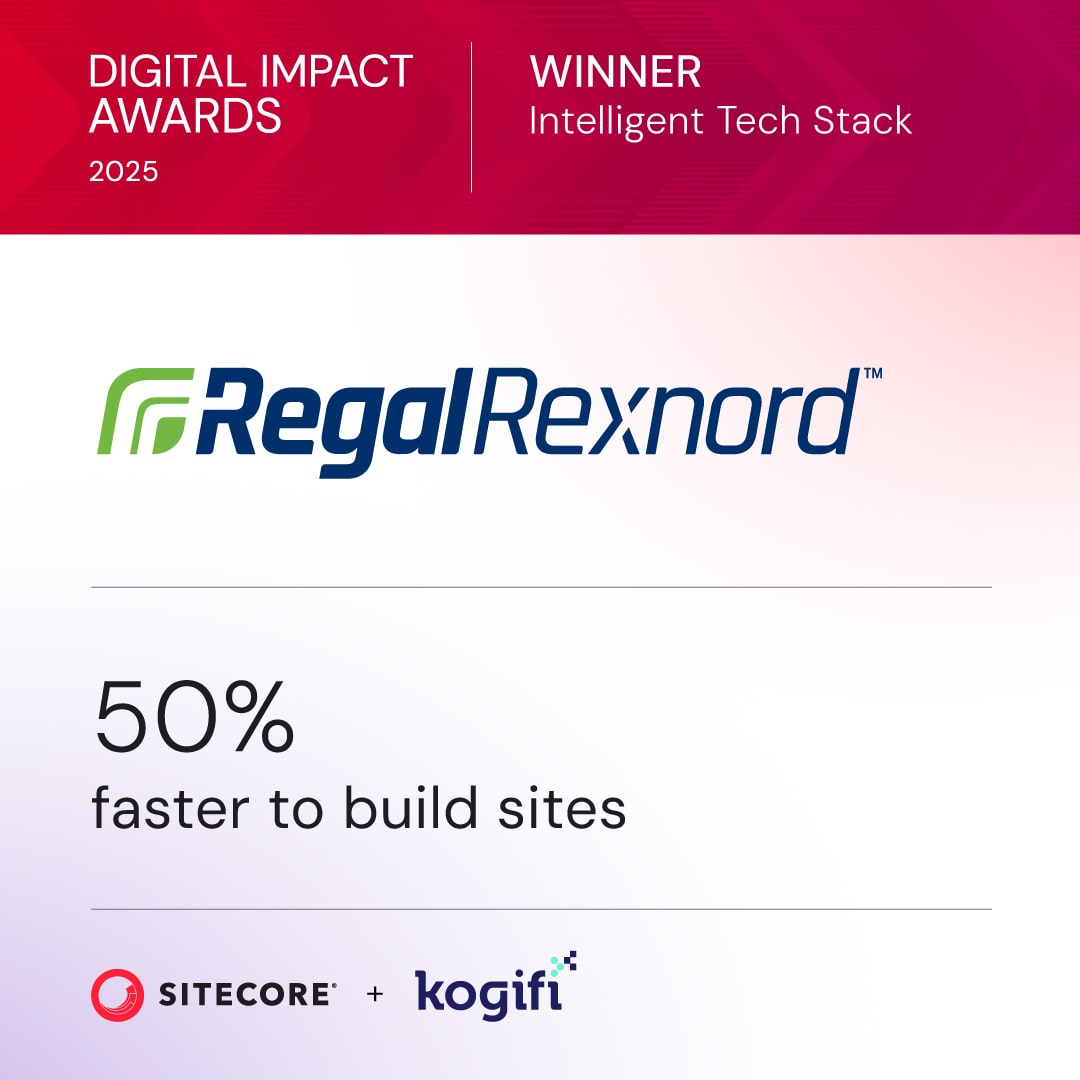When comparing Sitecore and Adobe Experience Manager (AEM) for interoperability, the choice depends on your organization's tech stack, integration needs, and digital goals. Here’s the key takeaway:
- Sitecore excels in flexibility with its .NET foundation, API-driven design, and tools like Sitecore Connect. It integrates well with third-party systems, making it ideal for enterprises with diverse tech ecosystems.
- Adobe Experience Manager thrives within Adobe’s ecosystem, offering seamless integration with tools like Creative Cloud and Analytics. However, it can be less flexible with external systems, favoring a suite-first approach.
Quick Overview:
- Sitecore: Strong third-party integration, modular architecture, .NET-based, supports gradual adoption.
- AEM: Best for Adobe-centric setups, Java-based, offers tight ecosystem integration but limited external flexibility.
Quick Comparison:
| Feature | Sitecore | Adobe Experience Manager (AEM) |
|---|---|---|
| API Capabilities | REST APIs, xConnect, 1,000+ connectors | REST APIs, GraphQL, OSGi modules |
| Third-Party Support | Strong, especially with Microsoft tools | Limited, favors Adobe ecosystem |
| Tech Foundation | .NET-based | Java-based |
| Omnichannel Delivery | Supports headless and composable setups | Focus on Adobe suite integrations |
| Cloud Options | On-premise or cloud-native options | Fully cloud-native |
For enterprises relying on Microsoft technologies or requiring broad integrations, Sitecore is often a better fit. Conversely, AEM is ideal for those deeply invested in Adobe's ecosystem. Your decision should align with your tech environment and long-term digital strategy.
AEM vs other CMS | AEM development
Sitecore Interoperability Features

Sitecore is built with interoperability at its core, leveraging its .NET foundation and a robust API ecosystem to connect seamlessly with various enterprise systems. Its architecture is designed to eliminate data silos and enable smooth integration across platforms.
Sitecore's .NET Framework and API-Driven Design
Sitecore's foundation on the .NET framework provides secure, scalable, and adaptable integration capabilities, making it a strong match for enterprise IT infrastructures. By separating content management from content delivery, the platform not only enhances security and performance but also opens up more possibilities for integrating with other systems.
With an API-first design, Sitecore makes it easy for developers to integrate external systems and marketing technology tools. The platform's well-documented APIs give teams the flexibility to connect Sitecore with existing enterprise applications seamlessly.
"Sitecore has always been about extensibility, plug-ability and giving the solution providers like ourselves the possibilities to extend and change what we need." - Klaus Petersen, Consultant
This flexibility is evident in real-world use cases. For example, Oriflame used Sitecore to integrate with Alipay and WeChat in China, enabling them to collect customer data and deliver personalized content on these platforms. Similarly, Innogy connected Sitecore with IoT sensors on gas meters, providing customers with real-time readings and tailored energy consumption advice.
Sitecore Connect and Low-Code Integration

Sitecore Connect serves as a powerful integration tool, simplifying system connections through low-code and no-code methods. It utilizes Workato, a leading workflow automation platform, to streamline these integrations.
"Think of Sitecore Connect as the gateway to your flexible future – an integration workbench that integrates your experience ecosystem with low-code/no-code connectors and integration scenarios known as recipes." - Fiona Hilliard, Senior Content Marketing Manager, Sitecore
With over 5,000 pre-built app connectors, Sitecore Connect enables businesses to quickly link Sitecore with popular tools, from CRM platforms to marketing automation systems.
Practical examples highlight its versatility. One company uses Sitecore Connect to sync Sitecore Content Hub products with internal systems, while another leverages Workato to integrate Salesforce CRM data with Sitecore XP xConnect. These integrations help businesses bridge the gap between content, insights, and actions, giving them greater control over their digital ecosystems.
These tools set the stage for Sitecore's advanced omnichannel delivery capabilities, which are explored in the next section.
Hybrid-Headless and Cloud-Native Strengths
Expanding on its integration capabilities, Sitecore supports advanced content delivery through its hybrid-headless architecture, allowing content to be distributed across any device or channel. This approach is becoming increasingly popular - by 2021, 64% of businesses had adopted headless solutions, a 25% increase from 2019. The benefits are clear, with headless implementations improving Core Web Vitals performance metrics by up to 50%.
Sitecore's cloud-native SaaS architecture also ensures scalable and efficient hosting. XM Cloud, its cloud-based CMS, delivers high availability, fast performance, and effortless scalability, all powered by modern Edge technology.
A compelling example of this is Joyce Meyer Ministries. In 2022, they modernized their ecommerce operations using Sitecore's headless architecture, achieving a 300% improvement in content release times for marketing updates. This demonstrates the operational efficiency that Sitecore's architecture can provide.
"XM Cloud is a game changer due to its balance between adopting MACH standards and providing open APIs for headless development, while also delighting and empowering marketers through new authoring tools and built-in personalization and testing." - Mark Ursino
Sitecore's composable DXP strategy, built on SaaS-based components, is designed for a fully cloud-native, MACH-compliant architecture. This modular approach enables businesses to assemble the best tools for their specific needs.
Currently, over 117,004 websites rely on Sitecore CMS development services. Among enterprise sites with 100,000+ visitors, Sitecore ranks as the 7th most popular CMS, highlighting its ability to scale and integrate across diverse enterprise environments.
Adobe Experience Manager Interoperability Features

When it comes to integration across digital platforms, Adobe Experience Manager (AEM) stands out for its ability to connect seamlessly within Adobe's ecosystem while maintaining flexibility for third-party integrations. AEM offers a unified environment that benefits enterprises leveraging Adobe's suite of tools, creating a streamlined experience for content creation and management.
This section delves into AEM's API capabilities, third-party connectivity, and its integration within the Adobe ecosystem.
AEM's Open-Source Approach and Adobe Ecosystem
AEM's open architecture and flexible framework make it easy to integrate with third-party tools while maintaining a tight connection with Adobe products like Creative Cloud, Analytics, and Campaign. The platform thrives on its ability to unify these tools, delivering a cohesive digital experience.
For context, the Adobe Experience Platform (AEP) powers over one trillion customer interactions annually. This scale enables what Adobe refers to as "Customer Experience Orchestration", where marketing and creativity tools, powered by AI, deliver tailored, one-to-one experiences.
"Adobe is uniquely positioned to guide companies to a dynamic era of Customer Experience Orchestration, where creativity and marketing come together with AI to deliver true one-to-one personalization at scale."
– Anil Chakravarthy, President, Digital Experience Business at Adobe
AEM also connects with Adobe Journey Optimizer and AI-driven tools like Firefly through Adobe I/O, enabling businesses to deliver personalized experiences across multiple channels. For example, Cognizant Netcentric used AEM's Document Authoring capabilities to launch a Bimota brand website in just three weeks. These integrations underline AEM's ability to create a unified ecosystem for content management and delivery.
API Structure and Third-Party Integrations
While AEM shines within Adobe's ecosystem, its third-party integration capabilities are just as noteworthy. The platform provides APIs and SDKs to connect with external systems, including popular asset repositories like OneDrive and Dropbox.
AEM supports integration through Server-Side Rendering (SSR) and Client-Side Rendering (CSR) approaches. In August 2024, Habtamu Tesfie demonstrated an SSR integration using an OSGi service layer, Sling Models for server-side data fetching, and HTL templates for rendering dynamic content. This approach centralizes data retrieval and improves SEO performance.
For e-commerce, the Commerce Integration Framework (CIF) enables connections with non-Adobe solutions using an integration layer. Adobe recommends leveraging Adobe I/O Runtime for these integrations. However, third-party integrations require careful attention to security. Misconfigured APIs were responsible for 80% of data breaches in 2023, emphasizing the need for proper implementation and ongoing monitoring.
Adobe Ecosystem Integration Strengths
AEM simplifies workflows with role-based quick actions, helping marketing teams move efficiently from idea generation to content delivery without switching between disconnected systems. Its blend of digital asset management and content management capabilities is especially valuable for enterprises aiming to deliver consistent, omnichannel customer experiences. Research shows that businesses with strong omnichannel engagement retain nearly 90% of their customers, compared to about 40% for those without.
The platform's headless CMS capabilities allow content delivery to any device via APIs like GraphQL. For instance, a major corporation's migration to AEM improved lead generation and enhanced customer satisfaction by offering simplified navigation and consistent web pages.
Additionally, the AEM Forms Data Integration feature connects disparate data sources, streamlining complex workflows for enterprise processes. Combined with Adobe's AI advancements, AEM offers businesses a deeply integrated solution for managing their digital ecosystems effectively.
These features set up a compelling comparison with Sitecore's interoperability capabilities, which will be explored in the next section.
sbb-itb-91124b2
Sitecore vs Adobe Experience Manager Comparison
Choosing the right enterprise platform depends on your current technology stack, integration requirements, and overall digital strategy. Sitecore and Adobe Experience Manager (AEM) both excel in interoperability, but they take different paths to achieve seamless connectivity. Here's a breakdown of their interoperability features:
Interoperability Features Comparison Table
| Feature | Sitecore | Adobe Experience Manager |
|---|---|---|
| API Flexibility | Uses the xConnect service layer with extensive REST APIs and offers over 1,000 out-of-the-box connectors | Provides REST APIs, OSGi modules, and GraphQL support for headless delivery |
| Third-Party Integration | Built on a modular architecture that ensures smooth integration with Microsoft and other third-party solutions | Focuses on strong integration within the Adobe ecosystem, though third-party connectivity can be challenging |
| Technology Foundation | Built on .NET (Sitecore) vs. Java (AEM), each optimized for their respective cloud environments | |
| Omnichannel Delivery | Supports composable architectures, JAMstack sites, and headless delivery | Delivers content across web, mobile, IoT, and digital signage via Experience Fragments |
| Implementation Complexity | Allows gradual adoption with modular scaling, avoiding a full replatform | Requires deep Adobe ecosystem integration with a suite-first approach |
| Cloud-Native Support | Offers high scalability with both on-premise and cloud deployment options | Features auto-scaling and a cloud-native architecture with AEM as a Cloud Service |
Platform Strengths and Challenges
While the table highlights the core differences, let’s dive deeper into what each platform brings to the table - and where they might fall short.
Sitecore’s emphasis on composability and flexibility makes it a strong contender, especially for organizations that need robust third-party integrations. With over 1,000 out-of-the-box connectors and a roadmap centered on composable architecture, Sitecore allows businesses to gradually build their ideal tech stack. Its compatibility with Microsoft environments further strengthens its appeal for enterprises already invested in .NET technologies.
Adobe Experience Manager, on the other hand, shines with its unified ecosystem and centralized content management. AEM simplifies workflows across teams and channels, seamlessly integrating with tools like Adobe Creative Cloud, Analytics, and Target. As of July 2025, AEM held a commanding 17.3% share in the Digital Experience Platforms category, compared to Sitecore’s 5.4%. However, AEM’s suite-first approach and limited flexibility with third-party tools can be a drawback for enterprises with diverse technology needs.
When it comes to deployment, Sitecore's modular scalability is ideal for gradual adoption and headless deployment strategies. AEM, however, leans toward a suite-centric approach that works best for businesses deeply integrated into the Adobe ecosystem. For U.S.-based enterprises, the choice often comes down to existing technology investments: Sitecore pairs well with Microsoft-based setups, while AEM aligns with Java environments and centralized digital experience strategies.
Enterprise Platform Selection Guide
Choosing the right digital experience platform is all about understanding your integration needs and technical requirements. When deciding between Sitecore and Adobe Experience Manager, it's essential to evaluate how well each platform integrates with your current systems and third-party tools. Building on the interoperability insights discussed earlier, let's explore the key factors U.S. enterprises should weigh to align their platform choice with their digital objectives.
Factors for U.S. Enterprises to Consider
Technology Stack Compatibility:
If your organization heavily relies on Microsoft-based technologies, Sitecore's .NET foundation offers strong integration capabilities. With tools like Sitecore Connect, it easily links to CRM, ERP, and marketing automation systems, improving system integration and operational workflows. On the other hand, Adobe's products have faced challenges in achieving seamless integration, both within their own suite and with external tools.
Integration Requirements:
Sitecore's API-driven architecture and its integration tool, Sitecore Connect, simplify the process of connecting with third-party applications. This makes it easier for enterprises to unify their digital operations and deliver consistent customer experiences. As highlighted by Forrester in 2023:
"Sitecore's integration capabilities are unparalleled, allowing enterprises to unify their digital operations and deliver cohesive customer experiences."
Vendor Ecosystem Considerations:
Sitecore demonstrates flexibility by integrating effectively with both its own products and third-party solutions. In contrast, Adobe's ecosystem is more restrictive, often making it difficult to integrate with tools outside its suite. This level of adaptability can be crucial for enterprises aiming to achieve a seamless and comprehensive digital transformation.
Aligning Platform Choice with Digital Goals
Your long-term digital strategy should guide your choice between Sitecore and Adobe Experience Manager. Sitecore's composable architecture allows for gradual adoption and scaling, making it a great fit for organizations seeking flexibility as they evolve their technology stack. Conversely, Adobe's unified ecosystem is better suited for businesses that are fully committed to an Adobe-centric approach.
For U.S. enterprises, the decision often hinges on their existing technology investments and the complexity of their integration needs. Companies with diverse technology stacks will likely benefit from Sitecore's extensive third-party connectivity. Meanwhile, those prioritizing centralized content management within a single ecosystem may find Adobe's approach more appealing.
Ultimately, the platform you choose should empower your organization to deliver seamless customer experiences while ensuring operational efficiency and scalability to support future growth.
Conclusion
Interoperability is at the heart of any successful digital experience strategy. When deciding between Sitecore and Adobe Experience Manager (AEM), the choice often comes down to your technical setup and integration priorities. Sitecore, with its extensive library of over 1,000 connectors and modular .NET-based architecture, is a strong option for organizations with diverse and complex tech ecosystems.
On the other hand, Adobe Experience Manager thrives within the Adobe ecosystem but can face challenges when it comes to integrating with third-party tools. Its reliance on tightly coupled integrations can sometimes make broader compatibility more difficult.
The architectural differences between the two platforms highlight the importance of aligning your choice with your business goals. Sitecore is moving toward a more composable structure, offering technical teams greater flexibility for broader integrations. Meanwhile, AEM remains focused on its cohesive, Adobe-centered approach. For businesses operating in .NET environments, Sitecore is often a natural fit, whereas AEM is better suited for enterprises deeply embedded in Adobe's ecosystem.
Ultimately, selecting the right platform depends on your current integration needs, existing technology investments, and long-term plans for digital transformation. At Kogifi, we specialize in guiding U.S. enterprises through these critical decisions, helping implement solutions that not only meet today’s demands but also position businesses for future growth.
Your platform's integration capabilities should align seamlessly with your digital strategy to ensure success.
FAQs
What should enterprises consider when comparing Sitecore and Adobe Experience Manager for interoperability?
When comparing Sitecore and Adobe Experience Manager (AEM) in terms of interoperability, it’s essential to examine how well they integrate with other systems, their API capabilities, and their overall architecture.
Sitecore stands out for its modular design, which allows it to easily connect with a variety of technologies. This makes it an appealing option for businesses looking for adaptable, cross-platform solutions that can cater to diverse operational needs.
Meanwhile, AEM shines within the Adobe ecosystem, offering smooth integration with other Adobe products. This makes it a strong contender for organizations already invested in Adobe tools. However, this tighter integration can sometimes mean extra work is needed to ensure compatibility with non-Adobe systems.
Both platforms support modern approaches like APIs and headless architecture. That said, Sitecore’s focus on flexibility and seamless interoperability often positions it as the preferred choice for enterprises with complex or varied requirements.
How does Sitecore's .NET framework and API-first design improve integration with third-party systems?
Sitecore's .NET framework and API-first design make it an excellent choice for integrating with third-party systems. Using REST and GraphQL APIs, along with pre-built connectors and automation tools, Sitecore simplifies data sharing and optimizes workflows.
This setup lets businesses link Sitecore with custom applications, CRMs, ERPs, or other enterprise tools, creating a cohesive digital ecosystem designed to meet their specific needs.
When is Adobe Experience Manager's integrated suite approach more beneficial compared to Sitecore's flexibility with external systems?
Adobe Experience Manager stands out as a go-to solution for enterprises seeking an all-in-one platform to handle complex digital environments. It's particularly suited for organizations that require a unified approach to content management, personalization, and analytics - think large-scale marketing campaigns or operations spread across multiple locations.
With its built-in tools and pre-configured integrations, Adobe Experience Manager simplifies the deployment process and ensures a consistent experience across various channels. This makes it especially beneficial for businesses aiming to streamline workflows while reducing dependence on third-party systems. The result? Faster implementation and smoother management of digital strategies across the enterprise.








































